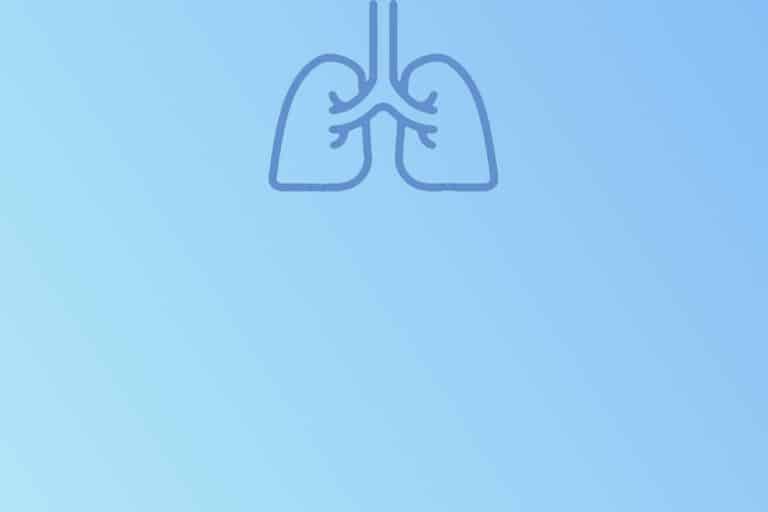Congenital heart defects
Critical congenital heart defects (CCHD) present during the neonatal period with cyanosis and/or cardiac failure depending on the particular defect and its severity. The incidence of the CCHD is approximately 1-3 : 1000. These defects can be diagnosed antenatally, however, anomaly scan detection rates vary significantly among different countries and also within the same country (e.g. 33-70% prenatal CCHD diagnosis in the UK).
In Europe, up to 30% of babies with CCHD are missed by neonatal examination, while in the USA, 30% of live-born neonates with non-syndromic CCHD are being diagnosed after 3 days of life. Another problematic area for diagnostics is the early discharge of term infants, thus reducing the time window of opportunity to detect these defects (babies are discharged before they can develop any symptoms).
Therefore, a combination of neonatal examination, imaging techniques and pulse oximetry remains important to pick up babies with CCHD. The suspicion is then confirmed by neonatal echocardiography. The defect needs to be diagnosed before the infant’s collapse, which significantly compromises surgical outcome and subsequent neurodevelopment.
General points
Clinical signs
- central cyanosis
- heart murmur
- tachypnea
- hepatomegaly
- acral coldness with poor peripheral pulses
- oliguria
- failure to thrive
Pulse Oximetry Screening
- detection of clinically undetectable hypoxemia (often present in CCHD)
- helps with detection of other pathologies as well (pneumonia, sepsis, pulmonary hypertension)
Imaging
- chest X-ray (abnormal heart situs and size, pulmonary edema)
- ECG (arrhythmias are associated with CCHD)
- ECHO (echocardiography)
Differential diagnosis
- polycythemia (cyanosis)
- persistent pulmonary hypertension of newborn (PPHN)
- sepsis
Treatment
- Prostaglandin (PGE2) continuous infusion and transport to Cardiac Surgery
- Cardiovascular surgery
- Antibiotic prophylaxis (infective endocarditis)
Prostaglandin E2 (dinoprostone)
→ keeps the ductus arteriosus open until the surgery is performed in newborns with critical congenital heart defects
→ continuous infusion (0.01 – 0.1 μg/kg/min)
→ adverse effects: apneas, hypotension, necrotizing enterocolitis
Cyanotic heart defects
Transposition of great arteries (TGA)
Transposition of aorta (from the right ventricle) and pulmonary artery (from the left ventricle). The two systems (systemic and pulmonary blood flow) can communicate through a number of shunts: foramen ovale, ventricular septal defect (VSD), ductus Botalli (PDA). TGA is more common in males, infants of diabetic mothers and infants large for gestational age. It is commonly observed in combined CCHD (multiple defects).
Therapy
- Prostaglandin => transport to Cardiac Surgery
- Cardiac surgery (arterial switch => pulmonary artery and the aorta are moved to their normal positions = definitive treatment)
- Cardiac surgery (atrial switch => when the arterial switch is not feasible due to particular coronary anatomy)
Tetralogy of Fallot (TOF)
Characterized by pulmonary stenosis, right ventricle hypertrophy, ventricular septal defect (VSD) and aorta overriding VSD. The severity of the defect (and clinical symptoms – cyanosis) depends on the severity of pulmonary stenosis and available pulmonary blood flow (in the worst cases, the flow is ductus-dependent, i.e. supplied through the arterial duct). Hypoxic episodes (“tet spells”) present with significant cyanosis, tachypnea, seizures and unconsciousness (and possibly death).
Therapy
- Prostaglandin => transport to Cardiac Surgery (only severe pulmonary stenosis)
- Cardiac surgery (corrective open-heart surgery => closure of the VSD (patch) and reconstruction of the right ventricular outflow tract (resection of muscles)
- For asymptomatic patients, the surgery is done between 2 months and 1 year of age
Pulmonary atresia/stenosis with intact ventricular septum
Apart from pulmonary atresia or severe stenosis, there can be also hypoplastic pulmonary trunk and the right ventricle. Pulmonary blood flow is maintained through the arterial duct. The outcome is limited by the level of hypoplasia of the right ventricle.
Therapy
- Prostaglandin => transport to Cardiac Surgery
- Cardiac surgery (shunt operation => anastomosis between systemic and pulmonary circulation)
- Cardiac surgery (Fontan operation => in case of insufficient right ventricle)
Ebstein’s anomaly
This rare defect is characterized by displaced septal and posterior leaflets of the tricuspid valve towards the apex of the right ventricle, causing “atrialization“. The displacement divides the ventricle into the proximal, “atrialized” part (causing the right atrium to be large) and the distal part (causing the anatomic right ventricle to be small).
Small-sized right ventricle and tricuspid regurgitation cause increased pressure in the right atrium and significant right-left shunting through foramen ovale or atrial septal defect. Mild forms can be diagnosed at later stage or be an accidental finding, severe forms present with cyanosis in the neonatal period with the risk for right-side cardiac failure.
Therapy
- Prostaglandin => transport to Cardiac Surgery
- Cardiac surgery
Heart defects with cardiac failure
Hypoplastic left heart syndrome (HLHS)
The defect is commonly associated with aortic/mitral valve atresia/stenosis and/or with hypoplastic aortic arch. Due to the hypoplasia, there is diminished cardiac output, causing respiratory and circulatory symptoms after birth (tachypnea, pale colour, poorly palpable peripheral pulses). 70% of infants with HLHS may reach the adulthood.
Therapy
- Prostaglandin => transport to Cardiac Surgery
- Cardiac surgery (3-staged reconstructive surgery => Norwood/Sano procedure within a few days of birth => Glenn/Hemi-Fontant procedure at 3 to 6 months of age => Fontan procedure at 2 to 5 years of age)
- Cardiac transplantation
Aortic stenosis (critical)
Cardiac output is maintained by the right ventricle with right-left shunting of the blood via the arterial duct (the oxygenated blood is shunted through foramen ovale to the right atrium and then right ventricle). Due to the stenosis, the left ventricular hypertrophy occurs (with possible development of endocardial fibroelastosis). Clinical picture is similar to HLHS (aortic stenosis can be also part of the HLHS).
Therapy
- Prostaglandin => transport to Cardiac Surgery
- Cardiac surgery (balloon valvuloplasty)
Coarctation of the aorta (CoA)
The defect (coarctation means narrowing) is characterized by the indentation (coarctation) at the posterior and lateral aortic wall, opposite to the area where the ductus arteriosus inserts. The coarctation can be simple or complex (combined with other CHD, like hypoplastic aortic arch).
Postnatally, when the arterial duct is wide open and maintaining blood flow to the lower half of the body, CoA can be asymptomatic (normal, palpable femoral artery pulses). When the ductus arteriosus closes (within the first week of life), left ventricular failure can occur due to the rapid increase in afterload, causing shock (hypoxemia, metabolic acidosis) and right-side heart failure (pulmonary hypertension).
Other symptoms include absent or poor peripheral pulses on the lower half of the body (a. femoralis), while the other pulses are palpable well (a. radialis). This discrepancy also causes significant difference in oxygen saturation (SpO2) and blood pressure measurements between the upper and lower extremities. Sometimes, the symptoms are more chronic rather than acute (feeding intolerance, failure to thrive, cardiac failure). Physiologically its complete form is manifested as interrupted aortic arch.
Coarctation of the aorta – division
- Preductal: proximal to the ductus arteriosus => blood flow to the aorta that is distal to the narrowing is dependent on the ductus arteriosus => severe coarctation can be life-threatening
→ appears when intracardiac anomaly during fetal life decreases blood flow through the left side of the heart, leading to hypoplastic aorta (5% of infants with Turner syndrome) - Ductal: at the insertion of the ductus arteriosus
→ appears when the duct closes - Postductal: distal to the ductus arteriosus => even with an open ductus arteriosus, blood flow to the lower body can be impaired (most common in adults => notching of the ribs due to collateral circulation, hypertension in the upper extremities, weak pulses in the lower extremities)
→ appears due to the extension of a muscular artery (ductus arteriosus) into an elastic artery (aorta) during fetal life (contraction and fibrosis the duct upon birth subsequently narrows the aortic lumen)
Therapy
- Prostaglandin => transport to Cardiac Surgery
- Cardiac surgery (resection of the stenosed segment and re-anastomosis => complications (left recurrent nerve palsy and chylothorax)
Interrupted aortic arch
A complete form (very rare defect) of the coarctation of the aorta (see above), where there is a gap between the ascending and descending thoracic aorta (only ductus arteriosus ensures blood inflow to the descendent aorta). Typically, there are other cardiac anomalies present: ventricular septal defect (VSD), aorto-pulmonary window, truncus arteriosus. The defect can be a part of genetic syndromes (e.g. DiGeorge). Due to insufficient blood flow to renal and splanchnic areas, the subsequent multi-organ dysfunction syndrome resembles sepsis or inherited metabolic disorder.
Therapy
- Prostaglandin => transport to Cardiac Surgery
- Cardiac surgery
References
① Plana MN, Zamora J, Suresh G, Fernandez-Pineda L, Thangaratinam S, Ewer AK. Pulse oximetry screening for critical congenital heart defects. Cochrane Database Syst Rev. 2018;3(3):CD011912. Published 2018 Mar 1. doi:10.1002/14651858.CD011912.pub2
② Axelrod DM, Chock VY, Reddy VM. Management of the Preterm Infant with Congenital Heart Disease. Clin Perinatol. 2016;43(1):157-171. doi:10.1016/j.clp.2015.11.011





